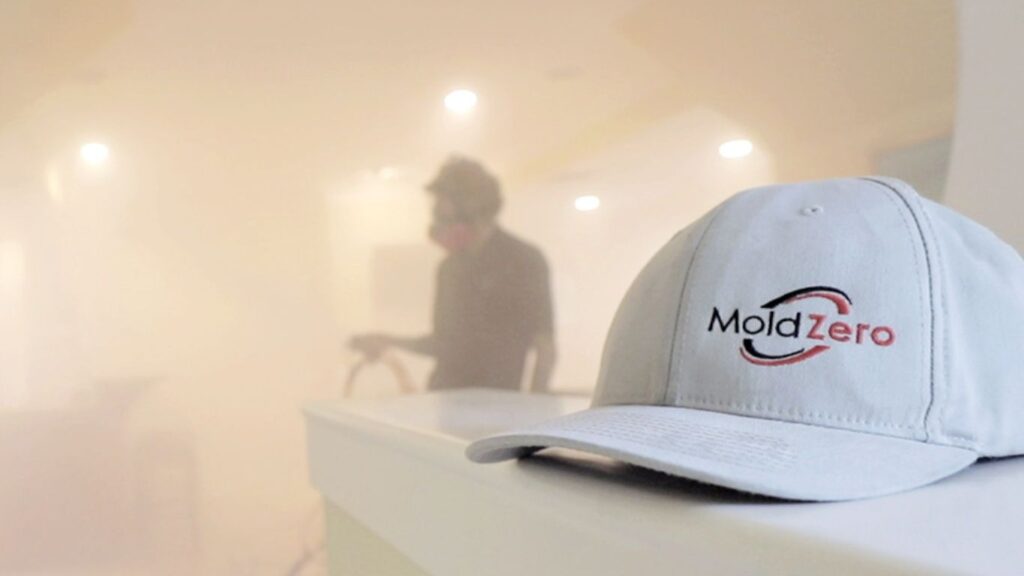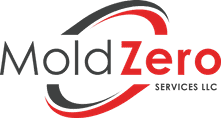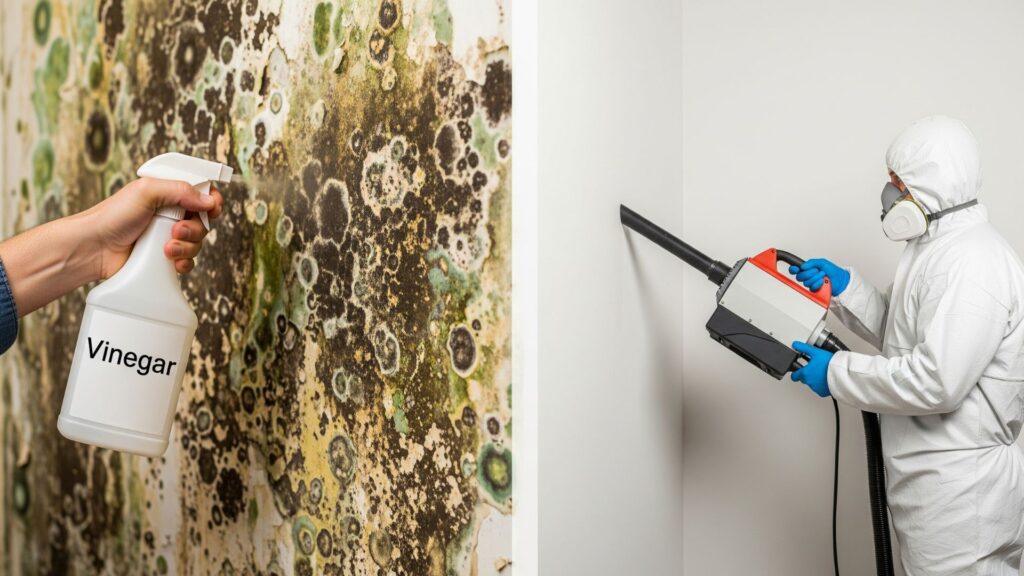Does Vinegar Kill Mold?
Many Los Angeles homeowners, searching for a quick fix for a musty smell or a dark spot on the wall, turn to their pantry. The internet is filled with articles and videos championing household products as cure-alls, and at the top of that list is often white vinegar. The question, “does vinegar kill mold?” is one we hear frequently. While it’s true that vinegar has acidic properties, relying on it for a genuine mold issue provides a dangerously false sense of security.
As NORMI certified professionals who have completed over 1,000 mold remediation jobs, we have seen firsthand the extensive property damage that occurs when a real mold problem is treated with a temporary, surface-level solution. Understanding the difference between a simple cleaning task and comprehensive mold remediation is critical to protecting your property’s value and structure.
The Science Behind Vinegar and Its Effect on Mold
To understand why vinegar falls short, it’s important to understand what it is and how it actually interacts with mold. This knowledge reveals why what seems like a simple solution is often no solution at all, especially for the types of mold issues commonly found in Los Angeles properties.
What is Vinegar and Why is it Used for Cleaning?
Vinegar is a dilute solution of acetic acid, typically around 5% acid and 95% water. Its acidity is what makes it a popular household cleaner. It can dissolve mineral deposits, cut through grease, and leave a streak-free shine on certain surfaces. Because of these properties, it has gained a reputation as a jack-of-all-trades cleaner. This reputation has, unfortunately, extended into areas where it is not suited, creating significant confusion and risk for property owners dealing with mold growth.
How Vinegar Interacts with Mold on Surfaces
When you apply vinegar to mold, the acetic acid can have an impact on the mold’s structure, but this effect is incredibly limited. Its effectiveness is almost exclusively confined to hard, non-porous surfaces like glass, solid plastic, or glazed tile. On these surfaces, mold cannot grow roots, so it sits entirely on top. Here, the vinegar can make contact with the entire organism. However, the vast majority of building materials in any home or business—drywall, wood, insulation, carpet, and grout—are porous. This is where the use of vinegar for mold removal becomes not just ineffective, but potentially counterproductive.
Uncovering the Limitations of DIY Mold Removal with Vinegar
The real story of vinegar and mold is one of limitations. While it might wipe away the visible discoloration on a shower tile, it fails completely when faced with a genuine mold colony that has established itself within the materials of your property. This is the critical blind spot of all DIY mold removal attempts.
The Porous Surface Problem: Why Vinegar Fails on Wood and Drywall
Mold is a living organism with a root system, much like a plant. These roots, called hyphae, burrow deep into porous materials like drywall and wood studs in search of moisture and nutrients. When you spray a vinegar solution onto these surfaces, you create a critical problem. The water in the vinegar solution (remember, it’s about 95% water) soaks into the material, delivering moisture directly to the mold’s hidden root structure.
The acetic acid, the only active component, largely remains on the surface and evaporates. You may have wiped away the visible evidence, but you have potentially just fed the larger, unseen part of the colony. This is precisely why vinegar isn’t enough for mold; it often nourishes the core of the problem while only cleaning the surface.
Surface Cleaning vs. Addressing the Root Cause
A successful mold remediation strategy must address the entire mold colony, including the airborne spores and the hidden hyphae. DIY mold removal with vinegar is, at best, a superficial cleaning. It’s the equivalent of trimming the top of a weed while leaving the entire root system intact in the soil. The weed will inevitably grow back, often stronger than before. Similarly, after a vinegar treatment, the mold colony will continue to thrive within the wall cavity or under the floorboards, degrading building materials and releasing spores into your property’s air.
The Hidden Dangers of Incomplete Mold Treatment
Attempting to resolve a mold issue with an inadequate method like vinegar carries significant risks. First, by disturbing the visible mold colony, you can cause it to release a massive number of spores into the air. Without professional containment and air filtration, these spores can travel through your HVAC system and land in other areas of your Los Angeles home or business, starting new colonies.
Second, by leaving the root system and moisture source unaddressed, you allow the mold to continue its destructive work. It will continue to digest organic materials like wood and paper-faced drywall, which can eventually compromise the structural integrity of your property, leading to far more expensive and invasive repairs down the line.
Professional Mold Remediation vs Vinegar: A Clear Comparison

The difference between a DIY attempt with vinegar and a professional service from Mold Zero is the difference between guesswork and a proven, scientific process. We provide a comprehensive solution that addresses every facet of the mold issue, backed by verification and a guarantee.
Assessment and Identification: The Professional First Step
Our process begins where a DIY approach can’t: with a professional assessment. Our NORMI certified experts conduct a thorough inspection to identify not just the visible mold, but also the underlying moisture source that is fueling its growth. We determine the full extent of the issue, which is often much larger than what is visible to the naked eye. This is a crucial diagnostic step that vinegar for mold removal completely skips, ensuring the problem will return.
Containment and Air Filtration: Preventing Cross-Contamination
Before any treatment begins, our team establishes critical containment barriers. We use heavy-duty sheeting and negative air pressure machines to completely isolate the work area. This ensures that as we address the mold, its spores are captured and contained, not spread throughout the rest of your property. This is one of the most important steps in effective mold removal methods and is impossible to replicate with a DIY setup.
Comprehensive Treatment: Beyond Surface Wipes
Our unique 5-step process is a systematic approach designed to address mold thoroughly and efficiently, often in just hours, not days. It goes far beyond what a simple liquid application can achieve, targeting the mold at its source and restoring the indoor environment. This is the core of what makes professional mold remediation vs vinegar the only reliable choice for your property.Our proven system ensures every angle of the mold problem is resolved. We don’t just treat the visible symptoms; we address the entire issue to provide a lasting solution for your property.
- Step 1: Detailed Inspection & Assessment: Our NORMI certified experts identify the moisture source and map the full extent of the mold issue, looking beyond the obvious signs.
- Step 2: Advanced Containment: We isolate the work area using professional techniques to prevent any spores from traveling to other parts of your Los Angeles property during the process.
- Step 3: Targeted Mold Treatment: We apply our specialized solution that neutralizes mold on contact. Our method reaches into porous materials and hidden cavities where vinegar and sprays cannot.
- Step 4: Air Quality Restoration: Our process includes addressing airborne spores, a critical step completely missed by all DIY methods, which helps restore the indoor environment.
- Step 5: Final Verification: We don’t just tell you the job is done; we prove it. We use independent, third-party lab testing to verify that the treatment was successful.
Post-Remediation Verification: The Mold Zero Guarantee
How do you know a DIY vinegar treatment worked? The simple answer is, you don’t. At Mold Zero, we remove all doubt. We provide post-treatment verification from an unbiased, independent laboratory. This report confirms the success of our remediation process. Furthermore, we stand behind our work with a 1-Year Guarantee. This level of accountability and proof is the ultimate peace of mind and something no bottle of vinegar can offer.
When to Call a Professional for Mold: Recognizing the Signs
Knowing when to put down the spray bottle and pick up the phone is key to protecting your property from escalating damage and cost. Certain situations are clear indicators that a professional solution is not just recommended, but necessary.
Telltale Signs That DIY is Not an Option
While a tiny spot of surface mildew on a non-porous shower surround might be a simple cleaning task, certain situations demand immediate professional attention to protect your property. Knowing when to call a professional for mold is crucial for a swift and effective resolution.You should contact an expert immediately if you encounter any of the following scenarios.
- The visible mold covers an area larger than 10 square feet (roughly a 3-foot by 3-foot patch).
- You smell a persistent musty, damp, or earthy odor but cannot locate a visible source. This often indicates hidden mold behind walls or under flooring.
- Mold growth appears after any kind of water damage, such as a plumbing leak, roof leak, or flood.
- The mold is growing on porous materials like drywall, wood, insulation, or carpeting, where its roots are embedded.
- You are a landlord, property manager, or business owner with a responsibility to provide a certain standard of environment for tenants or employees.
- You are preparing a property for sale or have just failed a home inspection due to mold.
- Anyone in the property is particularly sensitive to changes in the indoor environment.
The Cost of Waiting vs. The Value of Action
Property owners sometimes hesitate to call a professional, fearing the cost. However, the cost of inaction is almost always higher. Unaddressed mold will continue to consume and weaken building materials, potentially turning a straightforward remediation job into a major construction project. Our process is designed to be incredibly efficient and minimally invasive, completed in hours to reduce disruption and cost. Investing in professional remediation from Mold Zero is an investment in protecting your property’s value and structure for the long term.
The Trusted Choice for Mold Remediation in Los Angeles
When you discover mold, you need a solution you can trust completely. Relying on ineffective DIY methods like vinegar is a gamble with your property. Mold Zero offers a proven, guaranteed, and verified process delivered by experienced professionals.
Why Los Angeles Property Owners Choose Mold Zero
For over a decade, property owners across Los Angeles and San Marino have trusted Mold Zero. Our reputation is built on a foundation of experience, expertise, and unwavering commitment to our clients. With over 1,000 remediation jobs successfully completed, our NORMI certified team has the skill to handle any situation. Our “Family First” philosophy means we use solutions we would trust in our own homes. We combine this with our unique 5-step process, a 1-Year Guarantee, and the ultimate proof of third-party lab verification to deliver a service that is second to none.
Get Your Free, No-Obligation Inspection Today
Stop wondering, “does vinegar kill mold?” and get a definitive answer for your property. Protect your investment and the well-being of your occupants by addressing the issue correctly from the start. Don’t let a false sense of security lead to bigger problems down the road. Contact the experts at Mold Zero for a comprehensive solution.
Call us now at (626) 671-8885 to speak directly with a Los Angeles mold specialist. Or, fill out our simple online form for a prompt callback to schedule your free, no-obligation inspection and quote.

